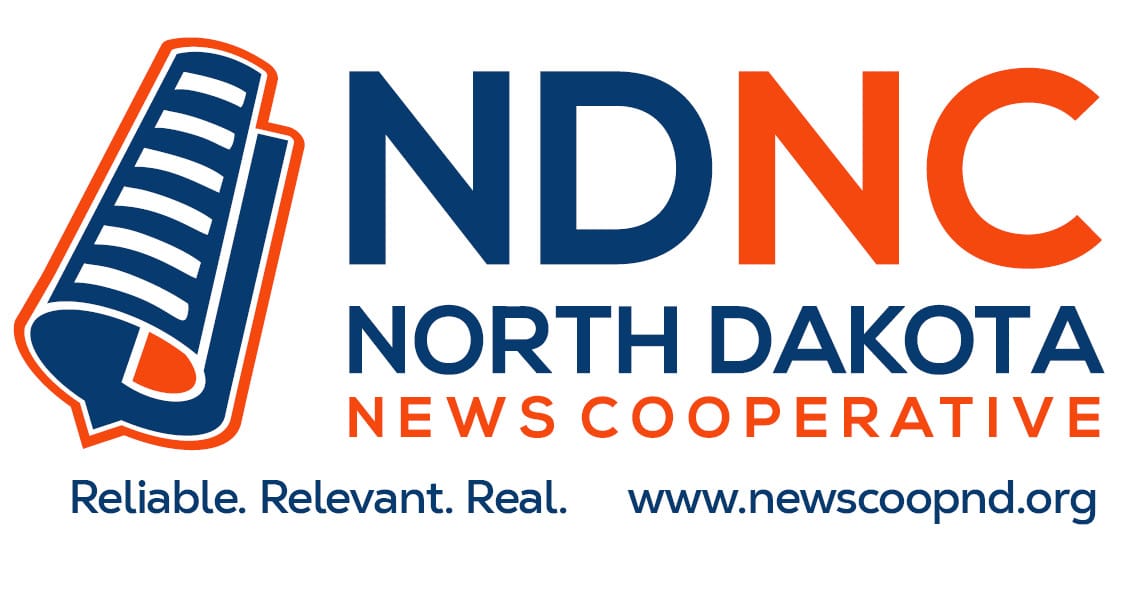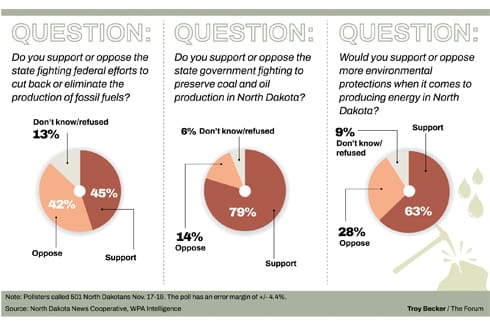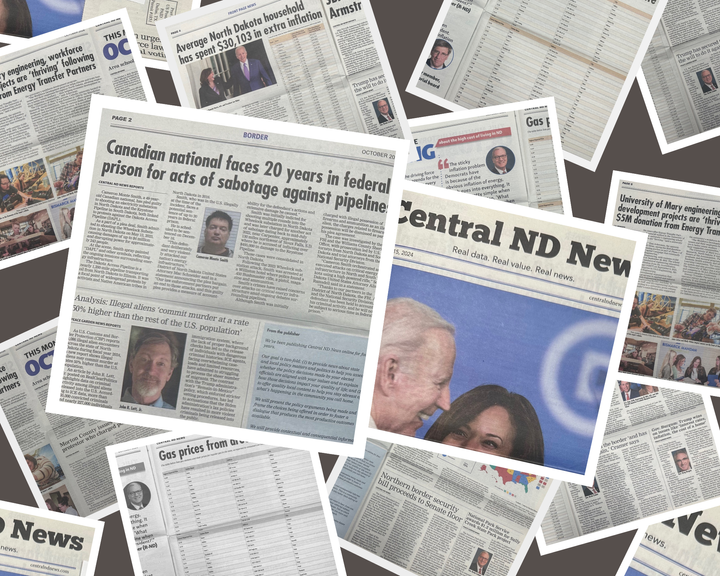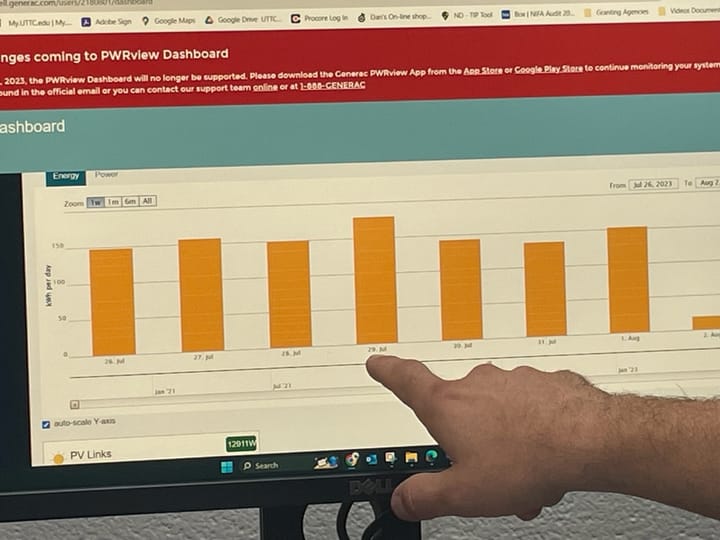With advancements, EVs could make more sense for rural ND
Technology, infrastructure coming, potentially generating other commercial activity

For Ryan Taylor, the pros of owning and operating an electric Ford Lightning F150 Lariat truck outweigh the cons, even without the promised expansion of charging stations federal programs aim to address.
Splitting time between Bismarck and his ranch near Towner, the former state senator said the electric truck has cut his fuel costs by an average of $1,400-$1,500 per 10,000 miles, reduced maintenance costs to almost zero, and operates better than any he’s ever had in winter weather conditions.
On the downside, battery performance is reduced in extreme cold, something that’s often raised as a concern for would-be EV drivers in the state.
“With winter driving you might get less miles in the cold, but it’s the best vehicle I’ve ever driven on the ice or snow,” Taylor said.
The other current con is limited fast-charging infrastructure that reduces travel options and can increase range anxiety.
Infrastructure shortcomings will partly be addressed through funding from the federal National Electric Vehicle Infrastructure (NEVI) program, which aims to establish a network of Level 3 DC fast-charging stations no more than 50 miles apart along the I-94 and I-29 corridors.
Other improvements include technological advancements on batteries that could lead to greater ranges and a wider range of vehicles. Agreements to synchronize charging protocols are also starting to help.
As of early 2024, for example, Ford EV drivers can access Tesla’s extensive supercharger network across the United States after adaptors are distributed. Currently in North Dakota, Tesla superchargers are in Grand Forks, Fargo, Jamestown, Bismarck and Dickinson.
Vehicle owners will have to weigh the pros and cons themselves as they go forward, but increasingly EVs and hybrids will start to make sense to more people in the state, those monitoring the transition say.
Just announced Environmental Protection Agency tailpipe emissions standards for passenger cars and light-duty trucks starting with 2027 models will also likely force a greater transition to all-electric and hybrid vehicles nationwide.
Right now, there’s still a lot of skepticism, largely due to performance concerns and the lack of established infrastructure across the state.
A recent North Dakota Poll sponsored by the North Dakota News Cooperative found only 8% of those surveyed were likely to buy an electric vehicle as their next car or truck purchase, and only 18% said they were likely to buy a hybrid.
Currently, electric vehicle ownership in North Dakota is minimal.
As of March, there were a total of 868 fully electric vehicles registered in the state, with about half of those located along the I-29 corridor, mainly in Cass County, according to the Department of Transportation (NDDOT). Adoption rates of EVs in the region, including North Dakota, Wyoming and South Dakota, are the lowest in the nation.
Infrastructure coming
Under the federal NEVI program, North Dakota will receive around $25.9 million for the network of charging stations along the two corridors, covering 18 potential sites.
The sites will go through a competitive bidding process with federal NEVI funds able to cover up to 80% of the cost, though ratios may differ depending on the bids, said Russell Buchholz, director of the Innovation of Transportation System at the NDDOT.
Buchholz estimated the cost of fast-charging stations would average between $600,000 and $1 million, depending on the system used at each. On the lower cost end would be battery buffer systems that wouldn’t need to bring in additional voltage other than what is already near a site, he said.
“These will work great in a rural setting where you don’t have as many charges,” Buchholz said. The systems could help cut the up-front costs for possible partner rural electric cooperatives since they wouldn’t have to bring in additional new infrastructure, he said.
NDDOT would like to tackle the rural locations first, which includes potential sites near Medora and Belfield, near Richardton, New Salem, Steele, Medina, Pembina, Drayton, Mooreton and near the Dakota Magic Casino on the South Dakota border south of Wahpeton.
Driving new business activity
Buchholz said a lot of interest has come from truck stops and gas stations as well as power companies, both for the selling of electricity but also for increasing commercial activity in those locations and tapping into tourist traffic.
For those customers charging for 20 to 30 minutes, nearby or adjacent cafes, restaurants and other amenities are often sought.
Jason Grenier, manager of market planning at Otter Tail Power Company said his company is looking to partner with developers to get sites established in North Dakota and wants to make sure rural customers aren’t left behind.
Part of that interest comes from seeing the stations as a potential driver of more business into small towns, particularly as EV ownership increases and more tourists travel across the state. I
“If someone needs a charge or if they need snacks, or whatever it is, you know, we want to have some amenities there where we can get them to come off the road and do some commerce, or come off the interstate and do some commerce in our community,” Grenier said.
“We really look at it as not only just serving the customer for charging but really bringing commerce to our communities, too,” he said.
A barrier to adoption of electric vehicles in North Dakota besides harsh winters, Grenier said, is that most customers in his region drive mid- to large size SUVs or trucks, and there are limited options available.
“I think that’s going to be a real game changer once we start to see more of those out there, either in a plug-in battery or plug-in hybrid,” Grenier said. “Those are going to be game changers once you start to see those come out more in the next couple of years.”
Zachary Smith, government relations director at the North Dakota Association of Rural Electric Cooperatives had similar sentiments, though said he felt rural electric cooperatives are less interested in operating stations than they are in partnering to see them get established.
Part of it will be how far vehicle manufacturers themselves go toward creating and marketing the electric and hybrid vehicles that more people want, he said.
“If they continue down the path of pushing toward electric vehicles, I think we need to be ready for them,” Smith said.
Generating local commerce from capturing visitors for a longer period has created some interest from communities, he said.
“I know there are some that have looked at it and wondered if it might be a way to get people to spend some time in their community when they might otherwise just fill up and go,” Smith said.
Bidding process forthcoming
Starting from April 1, NDDOT will be providing information to and meeting with businesses within a mile of those possible rural charging locations and then start a “notice of funding opportunity” bidding process that will last roughly two months. From there, a selection process will begin, with awards coming in October 2024.
NDDOT aims for all the charging stations to be drive-through. This would help with snow removal and allow for vehicles pulling trailers, he said.
“That kind of explains why we’re going with the rural ones on the first phase, to see how it goes,” Buchholz said.
Potential sites in the urban regions hosting stations will go through the same process around October as well. This phase would include a bidding process for stations in or near Dickinson, Bismarck-Mandan, Valley City, Casselton, Fargo, West Fargo and Hillsboro.
“Most or all of them could start going into the ground in early 2025,” Buchholz said, referring to both the rural and urban stations.
One stumbling block could be restrictions placed on the use of funds from the state or any political subdivision to cover costs beyond the federally funded portion. This came in the form of House Bill 2063 passed by the Legislature last year.
Buchholz noted economic development groups and local job development authorities may be able to partner on the charging infrastructure if they are registered as non-profit, non-governmental groups. NDDOT is trying to determine whether they’d be considered a political subdivision or not.
“If we don’t get any takers in a certain cluster area, and we want to put a charger in there, this allows us to go back to the Legislature and say we need to change this, to say either political subs or state dollars need to be used in order to open this up a little bit,” Buchholz said. “Right now, it’s really tight.”
New fast-charging systems recently placed in Grand Forks and Jamestown prior to the use of NEVI funds could allow NDDOT to later use leftover funds for charging stations on other highways, with Highway 52 and Highway 85 provided as examples.
When not charging overnight at home as most EV drivers, Taylor uses the charging network that currently exists. While not ideal, it is getting better. His ability to use an adaptor to plug the Ford Lightning F150 into the new Tesla charger in Jamestown reduced range anxiety on a recent trip.
The truck does most of the things a truck should do. Most, but not all.
“I'm driving it to the ranch and drive gravel roads, and occasionally hit some prairie trails,” Taylor said. “I can’t say that I'm pulling a horse trailer with it or hauling hay with it or anything. That's kind of what I use my big diesel for.”
The North Dakota News Cooperative is a nonprofit news organization providing reliable and independent reporting on issues and events that impact the lives of North Dakotans. The organization increases the public’s access to quality journalism and advances news literacy across the state. For more information about NDNC or to make a charitable contribution, please visit newscoopnd.org.



